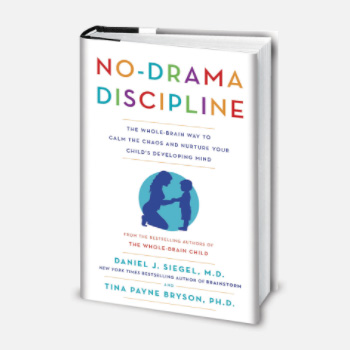Bringing Home Baby To Your Dog's Home: Tips From An Expert
Expecting a baby, and have a dog?
Read on to learn the ins and outs of cultivating a happy and safe relationship between your dog and baby from dog training expert, Michael Wombacher.

Good Dog, Happy Baby
Preparing your dog for the arrival of your child
By Michael Wombacher
In the last thirty or so years two demographic changes have intersected to create a new set of challenges for dogs and their owners. First, dog ownership has sky rocketed and the industry supporting what has become a national obsession has exploded in tandem. Simultaneously, young couples en masse are, for a variety of reasons, choosing to delay parenthood minimally into their late twenties and very often into their mid and even late thirties. During this time they often acquire a dog that comes to inhabit a host of roles. Among them is that of surrogate child. All of which is well and good – for the time being.
Understandably, with dogs serving as a kind of placeholder for the child to come, many couples pour all their parental tenderness into them. And in doing so loving owners often spoil them with very little thought given to how their surrogate child might take to the sudden arrival of a real child. And a real child can upset this entire arrangement.
Sadly, many people fail to consider how to prepare Fido for this turn of events. As a professional dog trainer, I’ve had many clients who dismissed my warnings about potential problems only to deeply regret it later.
Dog ownership in the United States is at an all-time high. About 55 million households contain one or more dogs, according to several national surveys. And 80% of dog owners say they consider their dog to be a part of the family rather than a mere pet. And yet, many of these canine relationships become troubled with changes in the family. This can lead to serious problems.
I’ve seen many situations where doggie was the boss of the house one day and several months later, she was on her way to a shelter. The truth is that dogs that feel jilted or afraid can and do get aggressive in these kinds of situations.
The statistics supporting this are staggering. On average there are 4.5 million reported dog bites every year in the United States. About 850,000 require hospital visits and about 35,000 require reconstructive surgery. And guess what? About 80% of these bites happen to children under 5 and of those about 80% are on the face and neck. And most disturbing of all, about 90% of these bites were inflicted by the family dog or a dog familiar to the child. The cumulative effect of all this is that by the age of 12 about 50% of American children have been bitten by a dog and many of those suffer from symptoms of PTSD because of it. It’s for all these reasons that the Centers for Disease Control (CDC) have labeled dog bites on children a national epidemic second only to teen substance abuse when it comes to threatening the welfare of children.
In short, if you believe that “my dog would never...” I would strongly urge you to reconsider your conclusion. In almost every case where I’m forced to counsel parents of young children to rehome their dogs this was the presumption they’d been operating under prior to aggressive incidents.
Fortunately in most cases these scenarios are easily preventable.
Begin by asking yourself key questions: Does your dog like children? Is she afraid of loud, sudden noises? Does she bark incessantly? Does she suffer from separation anxiety? The answers to these questions can help you design a roadmap for preparing your dog for baby’s arrival.
Key to all this is figuring out what changes you’re going to have to make in your dog’s life that your dog will be less than thrilled with as a consequence of adding a baby to your family and making those changes long before baby arrives. Failure to do so will almost ensure that your dog will associate such changes with your baby’s arrival. And this, in turn, could trigger an unhealthy competitive dynamic between them.
Your roadmap to a smooth integration between dog and baby should include special consideration of three key thresholds in your baby’s life.
In utero
You should plan for the arrival of your baby by implementing whatever structural changes you’ll have to make in the rhythm of your dog’s life long before the baby arrives. How long is long? It depends on your dog and how deeply embedded in your routine she is. But at a minimum changes should be implemented no later than a month to six weeks before your due date. And at a maximum, the moment you find out you’re pregnant. The key point is that your dog should not be able to associate these changes with baby’s arrival and begin nursing a grudge.
Look who’s grabbing
The second threshold rolls around when the baby approaches 8 months of age and begins crawling and grabbing. By this point the owner should have worked hard to condition their dog to the awkward grabbing and pulling at sensitive body parts that a baby will inevitably dish out (for more on this see my book Good Dog, Happy Baby and my related e-course).
They should also have created a safe zone for their dog so it can retreat beyond the baby’s reach when stressed. Additionally, they should have taught their dog to distinguish child toys from dog toys. This is relatively easy to do. Begin by getting dog toys that are significantly different in appearance from baby toys. At the same time, dab a little Listerine on all baby toys and teach your dog that the scent of Listerine equals an “off” command. This will go a long way to helping your dog make the right choice. And most importantly ensure that dog and baby are never, ever left unattended together, even for a moment.
Look who’s walking
The third threshold comes at around 14 months, when the baby starts walking. This shouldn’t present a major stumbling block if the owners have successfully crossed the first two thresholds. Rather, it will allow parents to begin focusing on structured, fun interactions between their child and dog, such as appropriate games, rudimentary pseudo-training and more (see related blog entry).
The point is that taking the time to prepare your dog for the arrival of your baby can pay off in spades in terms of a safe, wholesome and a mutually rewarding relationship for all involved. On the other hand, failing to spend a little bit of time preparing your dog for this significant addition to your family can have dire consequences. Which is why tragically so many new parents end up rehoming their beloved, often older dogs, within three to six months of a baby’s arrival.
In a perfect world, dog owners have 16 months from the time they find out they’re pregnant to the day when their baby begins to crawl. That’s a lot of time to make sure their dog knows what to expect. So do yourself and your dog a favor by choosing the latter road to a harmonious and loving future for all.
For more information please feel free to visit my website, check out my Amazon best-selling book Good Dog, Happy Baby, take a look at my in-depth e-course modules and listen to my recently launched podcast.
Michael Wombacher is a professional dog trainer and author of Good Dog, Happy Baby. In his 21 years of training Michael has performed over 30,000 one on one behavior consultations ranging from the mundane to the bizarre. He has also written several books, been featured on major television and radio programs nationwide, and trained dogs for high profile celebrities in the entertainment, technology and financial worlds. Keep track of Mike’s work with dogs and babies by visiting his website at www.gooddoghappybaby.com. Join the Good Dog, Happy Baby community here and receive a free PDF exploring the 22 questions you should ask yourself if you’re bringing a baby into a household with a dog.


